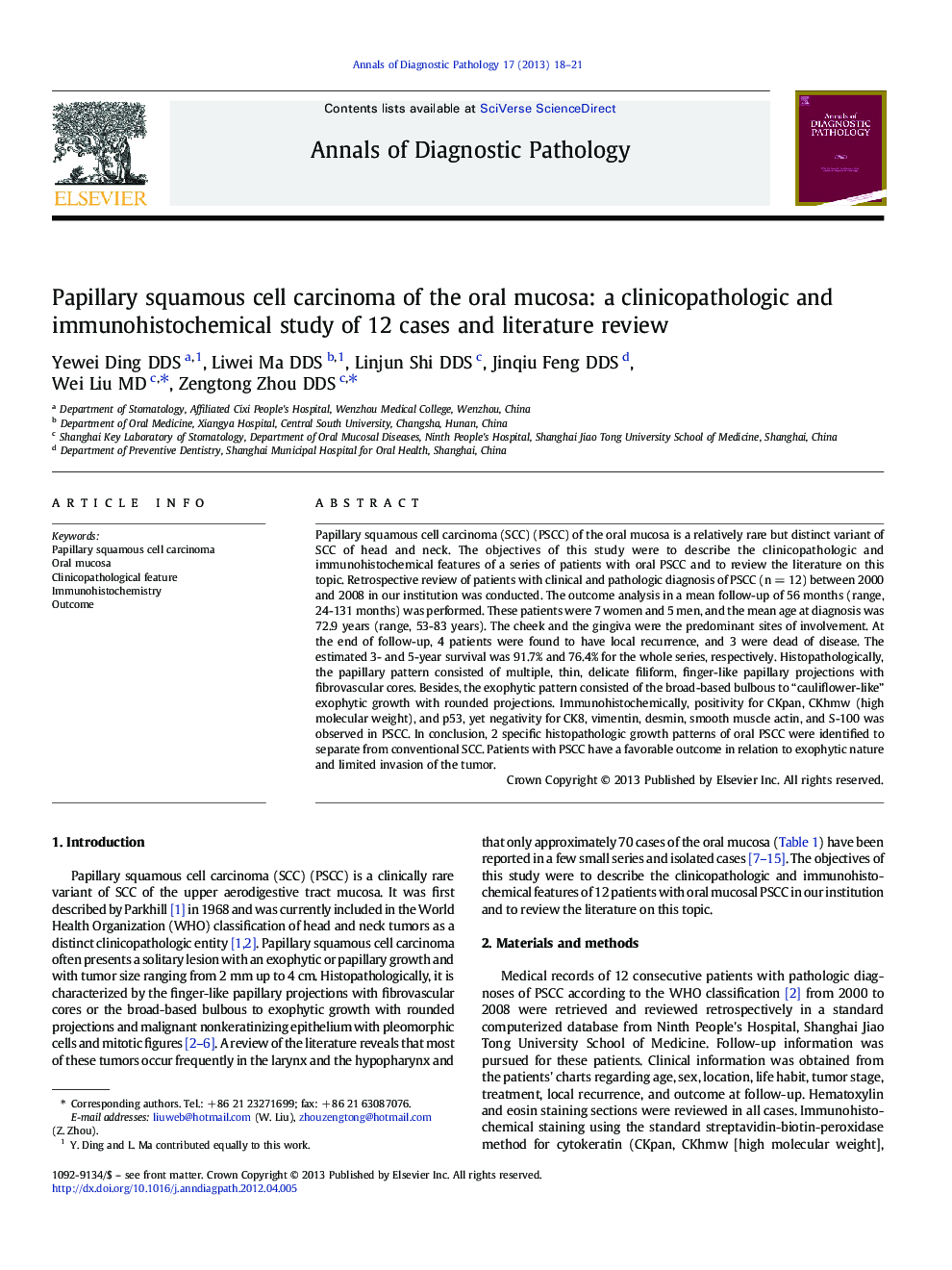| Article ID | Journal | Published Year | Pages | File Type |
|---|---|---|---|---|
| 6214989 | Annals of Diagnostic Pathology | 2013 | 4 Pages |
Papillary squamous cell carcinoma (SCC) (PSCC) of the oral mucosa is a relatively rare but distinct variant of SCC of head and neck. The objectives of this study were to describe the clinicopathologic and immunohistochemical features of a series of patients with oral PSCC and to review the literature on this topic. Retrospective review of patients with clinical and pathologic diagnosis of PSCC (n = 12) between 2000 and 2008 in our institution was conducted. The outcome analysis in a mean follow-up of 56 months (range, 24-131 months) was performed. These patients were 7 women and 5 men, and the mean age at diagnosis was 72.9 years (range, 53-83 years). The cheek and the gingiva were the predominant sites of involvement. At the end of follow-up, 4 patients were found to have local recurrence, and 3 were dead of disease. The estimated 3- and 5-year survival was 91.7% and 76.4% for the whole series, respectively. Histopathologically, the papillary pattern consisted of multiple, thin, delicate filiform, finger-like papillary projections with fibrovascular cores. Besides, the exophytic pattern consisted of the broad-based bulbous to “cauliflower-like” exophytic growth with rounded projections. Immunohistochemically, positivity for CKpan, CKhmw (high molecular weight), and p53, yet negativity for CK8, vimentin, desmin, smooth muscle actin, and S-100 was observed in PSCC. In conclusion, 2 specific histopathologic growth patterns of oral PSCC were identified to separate from conventional SCC. Patients with PSCC have a favorable outcome in relation to exophytic nature and limited invasion of the tumor.
